
Fortissimo
May 7th, 2011
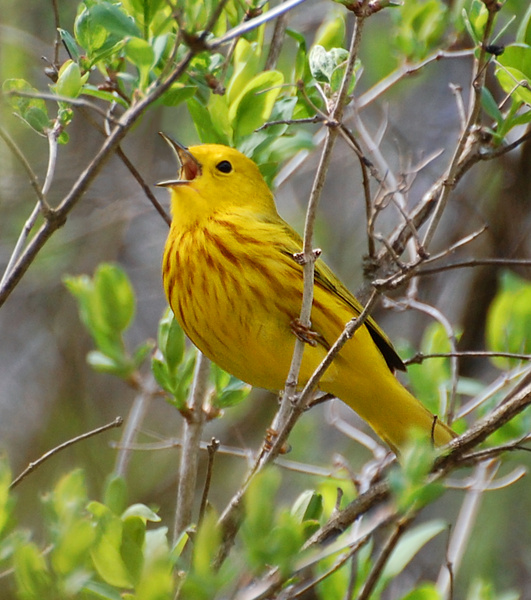
Mud Lake's breeding Yellow Warblers are back, and singing their hearts out!
Bufflehead
May 4th, 2011
This fellow swam by on the river while I was busily photographing the parula. It was my first opportunity to photograph a Bufflehead from anything like a reasonable distance, so I took it!
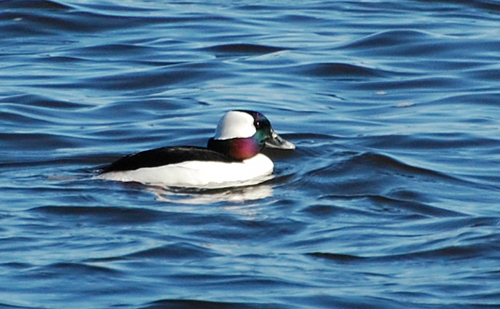
The Bufflehead is a very small diving duck, closely related to the goldeneyes. It is a primarily boreal species. Its small size is an adaptation to the size of its preferred nesting location: old Northern Flicker holes. As with Wood Ducks, the new ducklings will crawl out of the nest hole and jump, sometimes from many meters up, land on the forest floor and survive the fall (somehow!), and follow their mother to water.
The male Bufflehead's claim to fame is the beautiful rainbow irridescence of his head plumage, visible only in good light.
A bashful beauty
May 2nd, 2011

The Northern Parula is one of my favorite birds.
It's a tiny warbler, no bigger than a kinglet, with a bright yellow breast and, on the breeding male, some rusty banding across the throat. Its back usually looks grey, but if you see it close up and in just the right light, it turns a lovely shade of sky blue. (All blue birds are like that, to some extent--lighting-dependent, I mean. It's because the blue comes not from pigment, but from the way light refracts through specially-shaped feathers.)
Parulas are rather shy birds. It's not that they're particularly scared of humans, per se, just that their whole lifestyle seems designed around self-concealment. They don't fly much (except in migration), or hop out into the open much. They'll spend hours quietly creeping around in treetops hunting for crawling insects. Even when a parula sings (a song Roger Tory Peterson described as a buzzy tril "that climbs the scale and trips over at the top"), he often sings in mid-forage, not bothering to come out from behind his leafy cover.
The impression of shyness is completed by parula nesting habits. They require, in the south, woods festooned with spanish moss; here in the north, they use the similar Old Man's Beard lichen. Their nests are concealed within clumps of the moss.
So you might imagine they're tricky to photograph! I was at one for over an hour and never got my golden moment: the moment when the bird comes low, out in the open, in excellent light and well-posed, and I get in a shot in the millisecond I have before he hops back under cover. And it's not blurry. (With birds as hyperactive as most warblers, "not blurry" can be a challenge in itself.) Still, I got a few worth sharing.
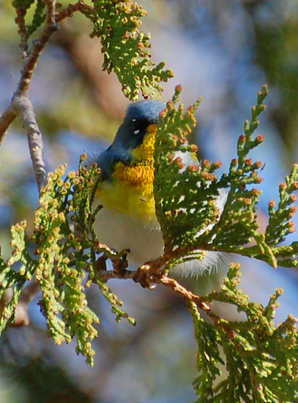
Did I mention, bashful? :-)

This photo shows another key field mark: a suffuse greenish-yellow patch on the middle of the back. It's particularly handy when identifying females.
The hills are alive with the sound of...
May 1st, 2011
birdsong!
I've now counted 52 species in migration--birds either returning to Ottawa, or passing through on their way further north. With warm weather, the dedicated insectivores are coming back. That means warblers!
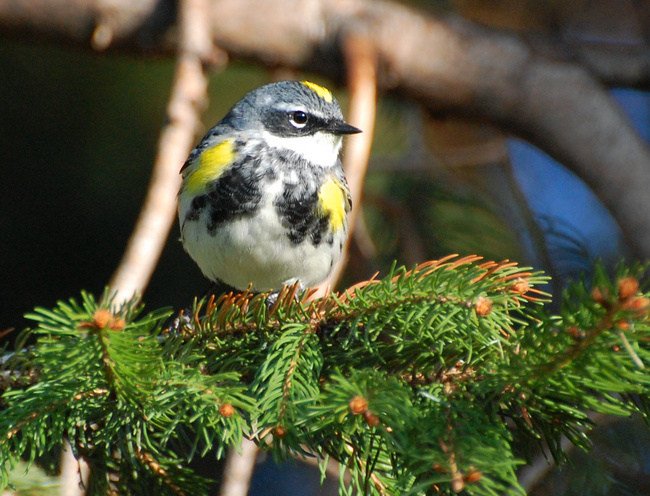
1680x1050 wallpaper
Have you ever seen something so teeming with little creatures, it's like the thing itself was alive? That's how it was yesterday morning, with three tall spruce trees at Mud Lake, and literally dozens of Yellow-Rumped Warblers packed into them. This species is an abundant breeder in the boreal forest, and thus an abundant migrant in spring and autumn. Birding becomes a matter of picking through the five hundred Yellow-Rumpeds to find the one interesting bird--the one who isn't a Yellow-Rumped but is one of the 20+ other warblers who occur in our area. But right now YRW's are still fresh and new and I'm enjoying them!
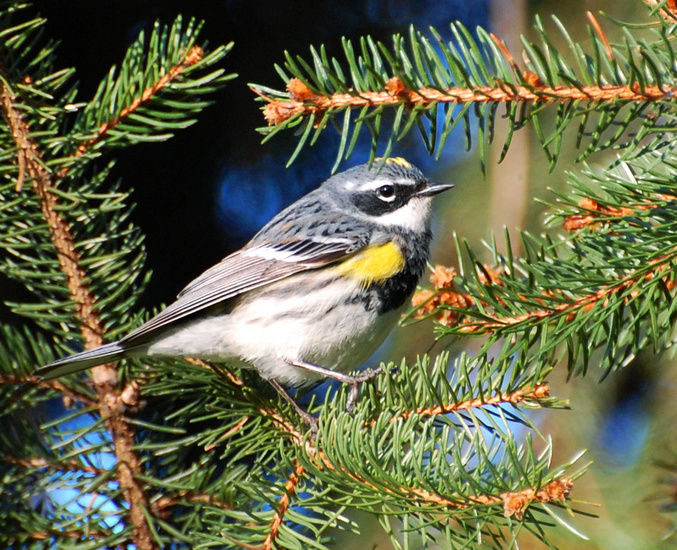
From AllAboutBirds:
Yellow-Rumped Warblers are perhaps the most versatile foragers of all warblers. They're the warbler you're most likely to see fluttering out from a tree to catch a flying insect, and they're also quick to switch over to eating berries in fall. Other places Yellow-Rumped Warblers have been spotted foraging include picking at insects on washed-up seaweed at the beach, skimming insects from the surface of rivers and the ocean, picking them out of spiderwebs, and grabbing them off piles of manure.
Spring is breaking out all over
April 10th, 2011
All of a sudden spring is here. Out in a sweatshirt, no jacket, with sleeves rolled up half the time. Buds on the trees and bushes. Mud Lake is now largely ice-free and new migrants are coming in one after the other! Killdeers and a Barn Swallow in the east end yesterday; Belted Kingfisher over the Rideau in the morning, all new. Today, my first Flicker of spring, and Tree Swallows swooping over Mud Lake and the Ottawa River, hawking the insects that are now emerging everywhere. Apparently someone saw ten (!) Black-Crowned Night Herons in a tree across the river, in the area where that species typically nests, but my binoculars weren't strong enough to pick them out.
I don't think of Mud Lake as a duck magnet in spring--migrant ducks usually prefer the nearby Ottawa River, which thaws earlier--but today the lake was the duckiest I've ever seen it in April, with small groups of Hooded Mergansers, Common Mergansers and Ring-Necked Ducks joining the resident waterfowl.
A Cooper's Hawk was making mating calls in the pine woods, suggesting that a pair of them will once again breed there this summer. I find it interesting that they and the raven pair nest so close to each other. Surely neither one is particularly comfortable with the other: a Cooper's Hawk would happily eat a raven nestling and a raven would just as happily eat a baby Cooper's Hawk!
Another week or so and the first Yellow-Rumped Warblers will start trickling in. Then, in May, their many cousins. I've made it my mission to get more warbler photos this spring.
( Migration 2011 )
Gatineau Trip Report
April 6th, 2011
So there was no Golden-Eagle-y excitement (not for lack of trying!), but there was nonetheless excitement. Saw my first Rough-Legged Hawk today. Lifer #244!
The "roughie" is a northern hawk, breeding in tundra and taiga around the globe. Its name is a reference to the fact that its legs are feathered down to the toes, an adaptation to its frigid habitat. It winters in Ottawa in small numbers, generally found in open country. Early April was probably about my last opportunity to see one for awhile. He was very far away, viewable only through scope, and was a puzzler to us at first. But in the end we were sure.
I think it was a Dark-Morph roughie. Perched, the bird was overall very dark except for a white patch on its nape and a second at the base of the tail.
Two new arrivals for my migration list: had a beautiful view of an Eastern Meadowlark singing in a field, and found an American Kestrel perched on a power line.
We went to an area with Wood Duck nest boxes looking for a Screech Owl. Someone had heard that a Screech Owl was habitually roosting in a particular box. So we stood at some distance from it and a woman with an IPod played a recording of the call, trying to draw it out if it was there. What happened next was fascinating and rather funny: 5-6 chickadees immediately flew over to that box--the precise one we'd been told was the right one--to investigate.
This demonstrates two things: one, it was indeed the right box, and two, chickadees ain't dumb! It wasn't just a Pavlovian response of "Screech Owl?! What, where?" It was a reasoned response of, "that's a Screech Owl. We've seen a Screech Owl recently in a particular location. Lets go there and check it out."
I had great fun and look forward to more trips with this group in the future.
Migration 2011
April 5th, 2011
The birding gods are comedians. I take an hour-long hike along the river looking for my first Great Blue Heron of spring. And where I do I finally see my first Great Blue Heron of spring? Flying across Bank Street.
Specifically, flying across Bank Street at Heron.
It's been a slow spring so far. The best action I've seen was on the first. After doing house-related stuff, Mike and I decided to explore the west end, and we ended up at Constance Creek--a well-known birding mecca, but one I'd never been to before. Saw a nice variety of migrant ducks there, plus a Northern Harrier.
Tomorrow I'm off to Eardley-Marsham / Gatineau with a local birding group. We'll see what kind of excitement we can stir up. I'm hoping for the kind that involves Golden Eagles :-)
( Spring Migration 2011 )
Red-Breasted Nuthatch
April 3rd, 2011
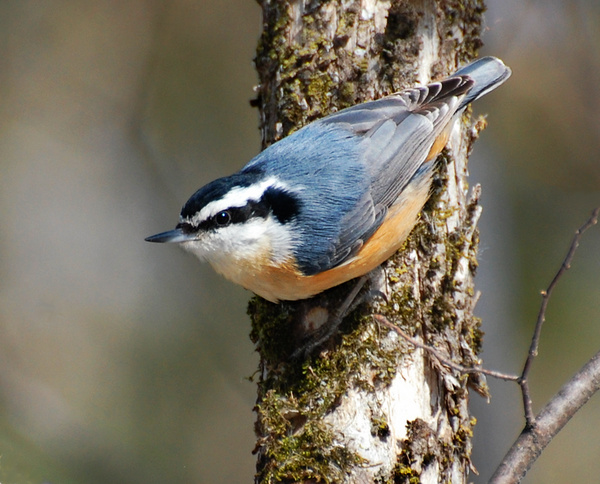
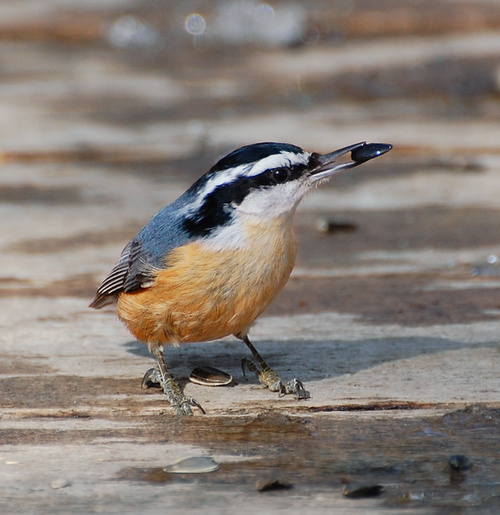
Raw Bar
April 2nd, 2011
I was fascinated by the behavior of a pair of Ring-Billed Gulls at Riverain Park. They were foraging on some waterlogged land--where the river had flooded then receded--and picking out what looked at first like shiny black rocks.
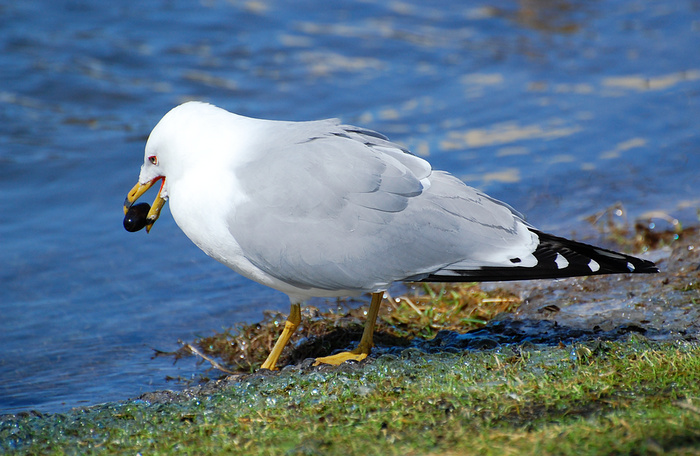
The "shiny rocks" turned out to be some sort of small freshwater bivalves (mussels?). The fascinating part was when they picked these up and carried them over to dip them in the river--a behavior that reminded me of raccoons. They would sit the bivalves in shallow water and peck at them. My theory is that they were putting them in the water to encourage them to open. Then they pecked and pried them open wider, picked them back up and feasted on the contents.
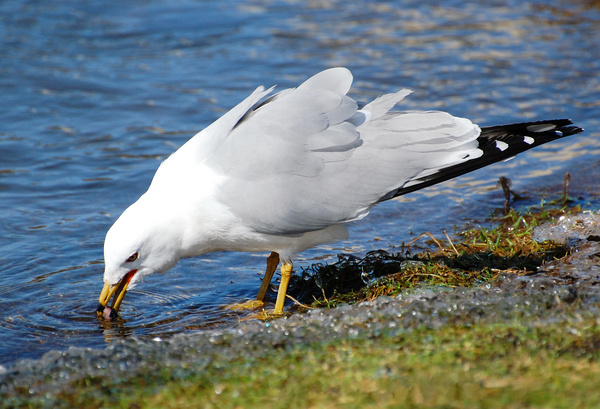
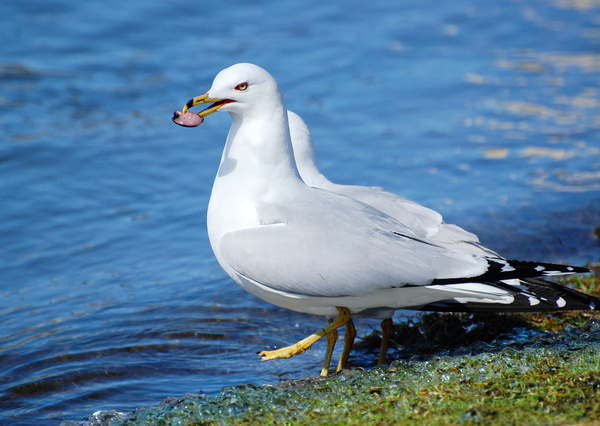
There was a fair bit of cooperation and sharing between the two gulls--a mated pair, perhaps?

Sublimely Silly
March 28th, 2011
The courtship of Hooded Mergansers never fails to make me smile.
On the Rideau Friday morning, I watched as two males vied for the attention of a female. It's like this: a male swims along in front of or beside his prospective mate--his white crest expanded to its full unwieldly proportions--then he starts jerking his neck spasmodically. After a second or two of this, all of a sudden (good luck firing the shutter at the right moment!), he pops his head all the way back, and utters a hoarse, soft "bow-bowwww." Some people call it a froggy sound--to me it's like a distant, muted didgeridoo.
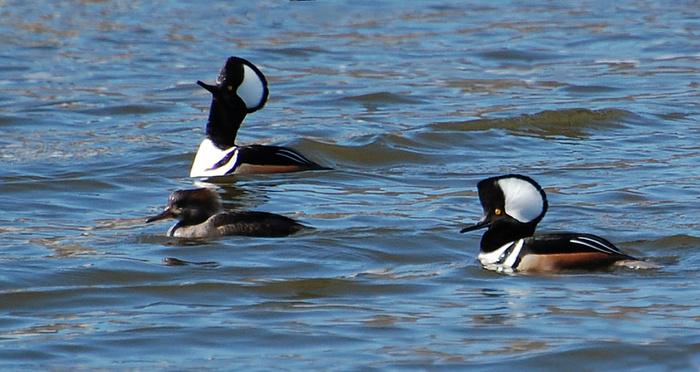
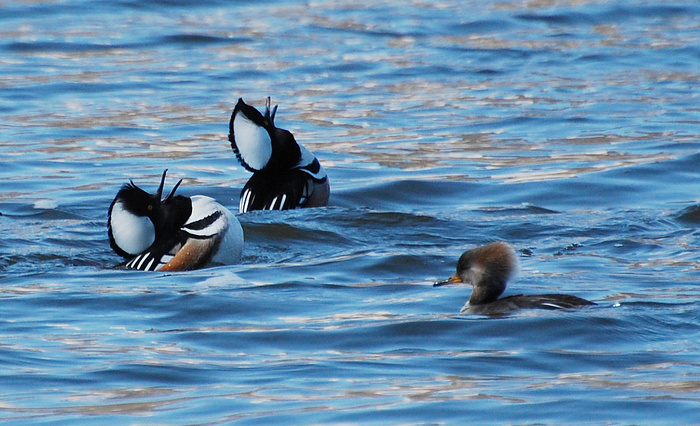
As with the goldeneyes, the female just swims along staring straight ahead and showing no apparent interest in all this weirdness. And yet, eventually, she gives in!
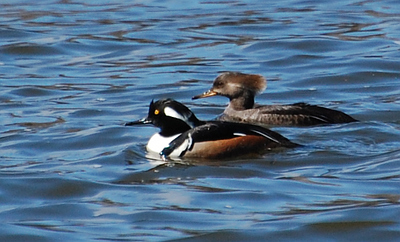
|
